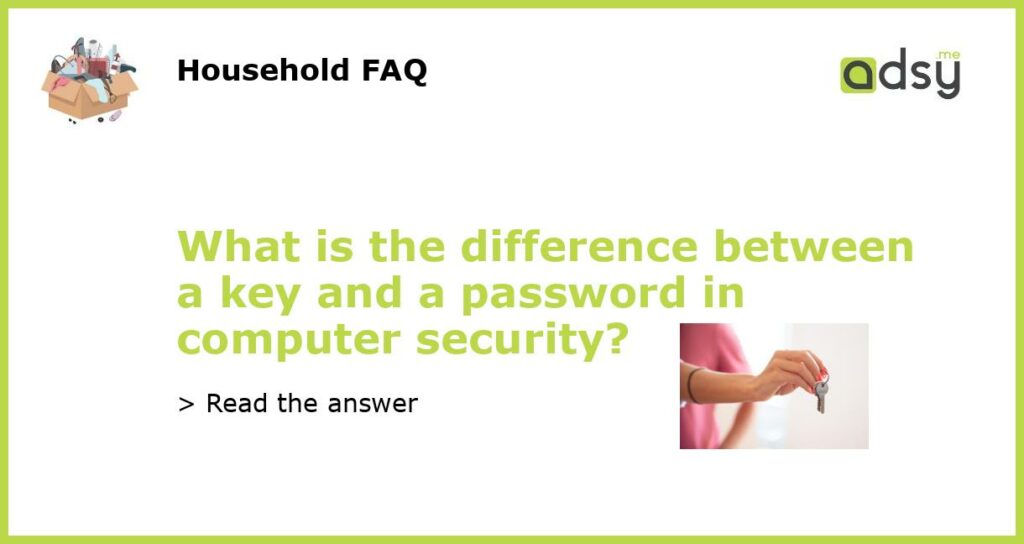The Difference Between a Key and a Password in Computer Security
In computer security, both keys and passwords play important roles in protecting sensitive information. While they have similarities, there are also distinct differences between the two.
Understanding Keys
Keys are commonly used in encryption algorithms to secure data. They are typically long strings of characters that are generated through complex mathematical calculations. Keys can be either symmetric or asymmetric.
Symmetric keys are used in symmetric encryption algorithms, where the same key is used for both encryption and decryption. This means that both the sender and the recipient of the encrypted data need to have the same key to decrypt the information.
On the other hand, asymmetric keys are used in asymmetric encryption algorithms, where a pair of keys is used: one for encryption and another for decryption. The keys in this pair are mathematically related but are not identical. This allows for secure communication without the need to share the same key.
The Purpose of Passwords
Passwords, on the other hand, are used for authentication purposes. They are typically used to verify the identity of a user and provide access to specific resources. Passwords are usually a combination of alphanumeric characters and are often kept confidential by the user.
Unlike keys, which are used for encryption and decryption, passwords are used to gain access to systems, accounts, or files. They serve as a barrier between authorized and unauthorized users, allowing only those who know the correct password to access the protected resources.
Level of Security
When it comes to security, keys are generally considered more secure than passwords. This is because keys are typically longer and more complex, making them harder to crack. Additionally, keys can be stored and transmitted securely, further enhancing their security.
On the other hand, passwords are often more vulnerable to various types of attacks, such as brute-force attacks and dictionary attacks. These attacks involve systematically trying different combinations of characters until the correct password is found. Passwords can also be intercepted or stolen if not properly protected.
Usages in Different Scenarios
Keys and passwords are used in different scenarios and have different purposes.
Keys are commonly used in scenarios where data needs to be securely transmitted or stored. They are often used in encryption protocols, secure communication channels, and digital signatures. Keys are also used in various authentication mechanisms, such as securing Wi-Fi networks or accessing encrypted files.
On the other hand, passwords are primarily used for user authentication. They are used to secure user accounts, online services, and other resources that require user identification. Passwords are commonly used in operating systems, online banking, email accounts, and many other applications.
Combination of Both
In many cases, a combination of keys and passwords is used to provide a higher level of security.
For example, when encrypting sensitive data, a symmetric key may be used to encrypt the data itself, while the key to decrypt the data is protected using a password. This allows for strong encryption of the data while ensuring that only authorized individuals can access the decryption key.
Similarly, in systems that require user authentication, a combination of a password and a key (such as a hardware token) may be used. This provides an additional layer of security, as the user needs to provide both the correct password and possess the physical key or token to gain access.
In conclusion, while keys and passwords both play crucial roles in computer security, they have distinct differences. Keys are primarily used for encryption and decryption, while passwords are used for user authentication. Keys are typically more secure than passwords, and a combination of both is often used to enhance security in various scenarios.






